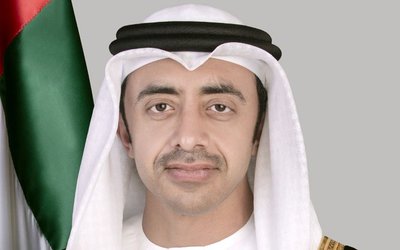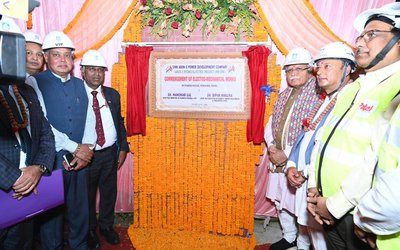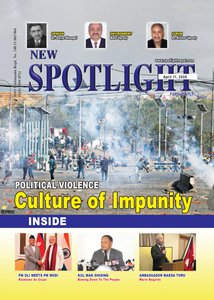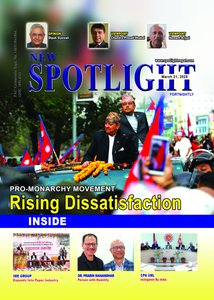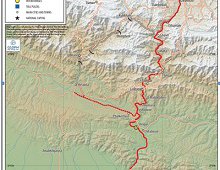
Background
Historically, the Kathmandu Valley was connected to India through a trade route: Thori of Parsa – Hetauda – Bhainse – Bhimphedi – Khulekhani – Chitlang – Chandragiri Pass to Thankot in Kathmandu. Later on Raxaul was connected with the Indian railway head which made Birgunj as an entry point. A motorable road was constructed between Birgunj – Hetauda – Bhimphedi which shortened traveling time between Kathmandu to Terai. However, the Mahabharat Range which stood between Mid Hill and Terai remained the serious obstacle. In order to remove this obstacle, the Royal Nepal Army completed the detail design of the Kathmandu Valley to Hetauda in 1954. Subsequently the Nepal Army constructed 70 Km of the Kanti Rajpath out of 91 Km in 1960. However, in parallel to this initiative, the Tribhuvan Highway was constructed with the Indian assistance and was completed in 1956. What were the historical reasons for not selecting the much comfortable Kanti Rajpath which avoided high altitude range has not been understood so far. However, as the Tribhuvan Highway Road Project was implemented by the Indian Army which may have another very important strategic objective for which they had to take alignment through high altitude ranges.
However, Nepal continued considering a shortest and most convenient route linking Kathmandu with Birgunj. After connecting the Prithivi Highway at Mugling with the Mahendra Highway at Narayanghat in the early eighties, all vehicles using the Tribhuvan Highway since 1956, started to use 92 km additionally longer route for reaching from Hetauda to Kathmandu. An excessive gradient with numerous loops was the main reason for drifting away traffic from the Tribhuvan Highway. In 1992, UNDP sponsored a study on the Kathmandu – Hetauda – Birgunj Corridor which selected Pharping Humane route with 23 tunnels. The Japanese study in 1991 proposed three corridors and Swiss study in 1992 proposed five corridors. DANIDA supported study in 1993 proposed 3 tunnels and examined 7 alternatives which was followed by a Japanese study in 1994. In 2003, a Bagmati Corridor Feasibility study was conducted. The Asian Development Bank (ADB) supported conducting a feasibility studies and Preliminary Design of the Fast Track in 2008 which laid a basis for taking forward this project.
Fast Track Project’s Significance
The “Fast Track” is a project which was dreamt by at least four Nepali generations. The Fast Track is proposed along the Bagmati corridor which originates at Sano Khokana and travels through Chhaimale, Gausel, Malta, Thingen, Budune and Chhatiwan and reaches to Nijghad at which it meets with the Mahendra Highway. The proposed project also intends to widen the 18 km stretch of Mahendra highway between Nijghad to Pathalaiya Section. It will decrease the travelling distance by 159 km and save travelling time by more than four hours. The alignment is presented in Figure.
The project is expected to generate an EIRR of 31%. However, the economic benefits above do not explain the whole story. The Nijghad International Airport will not be viable in the absence of this Fast Track road. The Nijghad Airport and the Fast Track Road Project will have capacity to invite increased numbers of Buddhist and Hindu tourists as the travelling time to Janakpur from this airport will be around 1 hour and Lumbini will be 4 hours. This road will bring all people from the Eastern Development Region closer to Kathmandu by about 4 hours. This will push urbanization around Birgunj, Nijghad, Hetauda area counter balancing the excessive population growth in Kathmandu. Kathmandu valley will have opportunity to develop itself as an administrative center, historical heritage site and academic center. As Kathmandu has been experiencing diseconomies of scale, a majority of industries can be shifted to Central east Terai. A majority of export oriented industries can be shifted as they will be closer to the international airport and also will be closer to the Kolkota port. This road will have leverage to integrate nation as it will address Madhesi grievances directly. An intensive industrial and commercial development in central eastern terai will greatly help to improve social harmony among Madhesi and Pahadi communities. More importantly, this road is one of the sections of the North South Transit Route which links between Birgunj with Rasuwaghadi shortly which is the most convenient pass to link Tibet with the Indian sub-continent. The Chinese government is going to extend the railway head up to Rasuwaghadi which means the trade potential between three countries will materialize soon for which the present Fast Track will play a pivotal role.
Government’s Off-the-Cuff Approach
GON has been adopting off-the-cuff approach since very beginning of this project. First, GON invited the Expression of Interest (EOI) in 1996 for implementing the Kathmandu Terai Fast Track Road without having a governing act. The Private Financing in Build and Operation of Infrastructures Act was approved only in 2006. This shows the government’s impulsive action.
Second, GON has been making several attempts on the Design, Build, Operate, Maintain and Transfer (DBFOMT). In 1996, GON intended to acquire land only and rest of the responsibilities were trusted to the concessionaire. In 2008, GON offered only toll based concession which was also followed in 2010. GON agreed to provide grant up to 15% of the capital costs in subsidies in 2012. GON accepted the unsolicited proposal from IL&FS company in 2014 which requested minimum vehicle guarantee scheme. After accepting the request from the Indian Company named IL&FS, GON re-advertised in 2014 September and it is learnt that 3 proposals have been submitted. These repeated adverts can be interpreted as immatured working approach.
Third, estimating transport demand has remained a dubious activity. In 2008, transport demand on the fast track was estimated as 5,500 vehicles per day. However, other surveys carried out in 2013 revealed that there will be only 3,000 or 4,000 vehicles per day in 2014. These discrepancies highlight the need to re-forecast traffic flows. Gaining an accurate view on traffic is particularly critical to determining final design specifications and making intelligent tradeoffs between different technical options. Demand will also have bearing on Fast Track’s commercial characteristics if GON seeks to integrate tolling into some aspect of the project’s overall funding strategy. This situation created highly confusing situation among the government itself, investors and donors.
Fourth, and some degree of lapses was felt in issuing license of the Kathmandu Kulekhani Hetauda Tunnel Highway Project (KKHTH). Why GON granted license to a private company particularly despite of a number of serious flaws in the project? Having no connection of KKHTH with Birgunj means no possibility of increasing per unit load and speed between Birgunj to Hetauda and consequently to Kathmandu. If KKHTH is built, GON have to compensate the prospective Kathmandu Terai Fast Track Road Project Concessioner for the differential volume of traffic caused by KKHTH. Moreover there are a number of design elements of KKHTH which do not allow it to become an expressway. The KKHTH’s estimated cost of NRs. 36 billion is in lower side by all standards. The issue is not whether the Nepal Purwadhar Bikash Company would be able to construct this KKHTH but the real issue is why GON did not consider such technical and financial issues.
Fifth, GON acquired land and allowed the Nepal army to start earthwork excavation without concluding the detail design. The 2008 feasibility study was based on the present road standards. However, Fast Track requires significantly higher geometric standards. With 3.5 m wide Nepal Army excavated section, the slope cuts are about 50 m which definitely reach at least to 100 m if the road section is widened to four lane expressways. Road sections with hillside cut slopes in excess of 35 meters may be more costly than an alternative involving some form of structure. The road alignment is extremely fragile and excessive hill side slope invites accelerated landslides.
Sixth, GON has remained risk averse in terms of the funding decision. It is clearly understandable that the government wants to use the private sector’s financial resources as has been used by various countries. Under certain circumstances, it is really cost-effective solution. However, the private sector remains normally shy with the project of this scale of technical complexity. The available financing opportunities for the project are extremely limited in the country.
GON has agreed to offer a minimum revenue guarantee to the concessioner in addition to the initial grant of NRs. 15 bio. Tentatively the amount of minimum revenue guarantee will be around NRs. 8 billion annually. Why GON is interested to pay such a hefty amount to the developer is not understandable. Assuming that the total project cost of NRs. 100 billion, the project payback period with the minimum revenue guarantee will be around 12 years. If the actual vehicle toll tax is also considered, the payback period goes down to around 8 years or so. Under such circumstance, government’s reluctance for allocating resources for the fast track has become mysterious. It is also susceptible whether the concessioner will report the exact number of vehicles that pass through the Fast Track particularly under the current Nepal’s governance condition.
Prudent Path to go ahead
There is consensus in Nepal that the Fast Track has to be constructed. However, how to implement has been the point of discussion. The need for Fast Track is clearly evident from an analysis of basic indicators relating to trade and transport. The Fast Track would save approximately NRs. 4,000 per one way trip for a heavy truck. It means assuming 5,000 vehicles in a day, the annual savings will be around NRs. 7.3 billion. The Fast Track will have a direct impact on the settlement pattern which will decrease in Kathmandu Valley and increase in central Terai. These are desirable impacts from national perspectives.
In order to move ahead seriously, GON have to form a powerful Fast Track Authority. In the absence of such an institution, it will be very difficult to implement such a complex project. GON has to estimate reliable transport demand based on status quo and developmental scenario. Secondly, the technical fundamentals of the project have to be correct. For example alignment, required design standards etc.
Most importantly, GON have to be clear in terms of funding instrument. The concessioner will not bring money as grant to Nepal. The private sector may finance infrastructure investment expecting future returns. Ultimately the investment has to come from user charges such as tolls, fuel cess, vehicle taxes, etc.; transfers from general tax revenues; bilateral or multilateral grants from foreign institutions. It is sensible for the government to consider these cold realities while choosing funding instruments. Under these circumstances, the government should have courage to make investment from its own coffer rather than expecting from external concessioner particularly when it demands minimum revenue guarantee.






